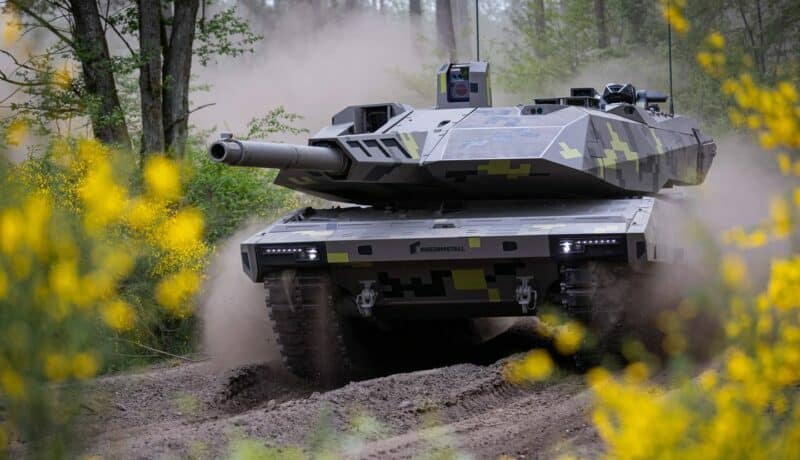At the beginning of March, the bubbling president of the German industrial giant Rheinmetall caused a surprise by announcing that negotiations were under way with Kyiv, with a view to build a factory in Ukraine capable of assembling 400 KF-51 tanks Panther annually, so as to give the Ukrainian armies not only a major technological and operational advantage against the Russian forces, but also to standardize and rationalize the armored fleet of the Ukrainian armed forces which, today, has little to envy to the course of the Miracles so many references and micro-fleets are there. In addition, Kyiv would have the opportunity to acquire a fleet of modern KF-41 Lynx infantry fighting vehicles in parallel, these can be produced on the Hungarian assembly line built following the order by Budapest of 218 of these armored vehicles in September 2020. And to add that the construction of this factory, which would cost 200 m€ according to the German entrepreneur, had to start as soon as possible to meet Ukrainian operational needs.
Since then, the management of Rheinmetall like the Kyiv authorities, without denying Armin Papperger's statements, have remained particularly discreet on this subject. Officially, the subject is so sensitive that it cannot be exposed publicly until a definitive agreement has been obtained. But for many specialists, the announcements made by the CEO of Rheinmetall raise more questions than they provide answers. In effect, many elements "do not stick" to the existing or foreseeable reality, so many are openly skeptical about the materiality of this announcement. It is true that, even very brief, this announcement hardly makes sense.

Firstly, the construction of an industrial site which would make it possible to assemble 400 modern tanks like the Panther, would take a lot of time, and much more than the €200 million mentioned by Mr Papperger. Even if the site was only intended for the assembly of armored vehicles, it would have to have very extensive industrial and transport infrastructures, so as to absorb the industrial flow thus generated to produce more than one new tank per day. On the other hand, beyond the assembly infrastructure, such a flow would require significantly changing the production capacities of all the subcontractors participating in the program, particularly within the German BITD, which implies, here again, numerous investments, but also the training of numerous new operators. And here comes a second very surprising point in this declaration. Indeed, the Ukrainian Armies have the capacity to deploy between 800 and 1200 heavy tanks, which requires production over only 3 years. Even taking into account possible export markets, as well as possible combat attrition of the Ukrainian fleet, it is difficult to envisage production beyond 5 to 6 years, an active production timeframe far too short in view investments required in Ukraine as in Germany. In fact, from a purely industrial and economic point of view, the model described by Armin Papperger, it is true a few weeks before the publication of the company's results, seems very inconsistent.

The rest of this article is for subscribers only
The Classic subscriptions provide access to
all articles without advertising, starting at € 1,99.
Newsletter subscription
Register for the Meta-Defense Newsletter to receive the
latest fashion articles daily or weekly


[…] offered by Rheinmetall to anyone showing an interest in acquiring a new heavy tank, including in highly improbable settings. How, in this case, can we even imagine that France can turn to […]
[…] […]
[…] to produce 400 Panther per year, values that all experts in the field agree to find implausible. Fortunately for the Rheinmetall stock price, the Berlin arbitration was […]
[…] is offered by Rheinmetall to anyone who shows an interest in acquiring a new heavy tank, including in highly improbable settings. How, in this case, can we even imagine that France could turn to this […]